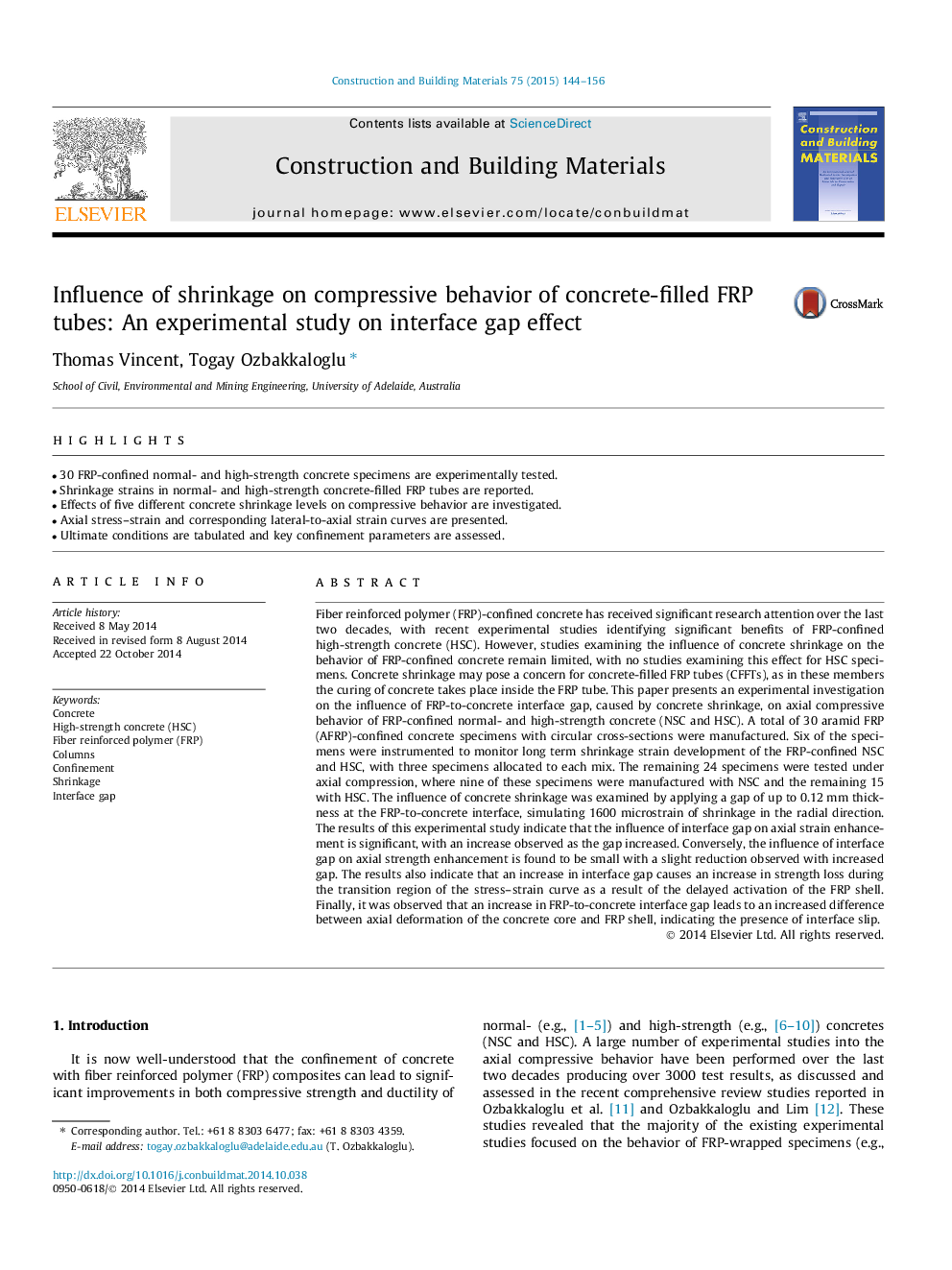| کد مقاله | کد نشریه | سال انتشار | مقاله انگلیسی | نسخه تمام متن |
|---|---|---|---|---|
| 6721675 | 503582 | 2015 | 13 صفحه PDF | دانلود رایگان |
عنوان انگلیسی مقاله ISI
Influence of shrinkage on compressive behavior of concrete-filled FRP tubes: An experimental study on interface gap effect
دانلود مقاله + سفارش ترجمه
دانلود مقاله ISI انگلیسی
رایگان برای ایرانیان
کلمات کلیدی
موضوعات مرتبط
مهندسی و علوم پایه
سایر رشته های مهندسی
مهندسی عمران و سازه
پیش نمایش صفحه اول مقاله

چکیده انگلیسی
Fiber reinforced polymer (FRP)-confined concrete has received significant research attention over the last two decades, with recent experimental studies identifying significant benefits of FRP-confined high-strength concrete (HSC). However, studies examining the influence of concrete shrinkage on the behavior of FRP-confined concrete remain limited, with no studies examining this effect for HSC specimens. Concrete shrinkage may pose a concern for concrete-filled FRP tubes (CFFTs), as in these members the curing of concrete takes place inside the FRP tube. This paper presents an experimental investigation on the influence of FRP-to-concrete interface gap, caused by concrete shrinkage, on axial compressive behavior of FRP-confined normal- and high-strength concrete (NSC and HSC). A total of 30 aramid FRP (AFRP)-confined concrete specimens with circular cross-sections were manufactured. Six of the specimens were instrumented to monitor long term shrinkage strain development of the FRP-confined NSC and HSC, with three specimens allocated to each mix. The remaining 24 specimens were tested under axial compression, where nine of these specimens were manufactured with NSC and the remaining 15 with HSC. The influence of concrete shrinkage was examined by applying a gap of up to 0.12Â mm thickness at the FRP-to-concrete interface, simulating 1600 microstrain of shrinkage in the radial direction. The results of this experimental study indicate that the influence of interface gap on axial strain enhancement is significant, with an increase observed as the gap increased. Conversely, the influence of interface gap on axial strength enhancement is found to be small with a slight reduction observed with increased gap. The results also indicate that an increase in interface gap causes an increase in strength loss during the transition region of the stress-strain curve as a result of the delayed activation of the FRP shell. Finally, it was observed that an increase in FRP-to-concrete interface gap leads to an increased difference between axial deformation of the concrete core and FRP shell, indicating the presence of interface slip.
ناشر
Database: Elsevier - ScienceDirect (ساینس دایرکت)
Journal: Construction and Building Materials - Volume 75, 30 January 2015, Pages 144-156
Journal: Construction and Building Materials - Volume 75, 30 January 2015, Pages 144-156
نویسندگان
Thomas Vincent, Togay Ozbakkaloglu,